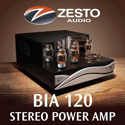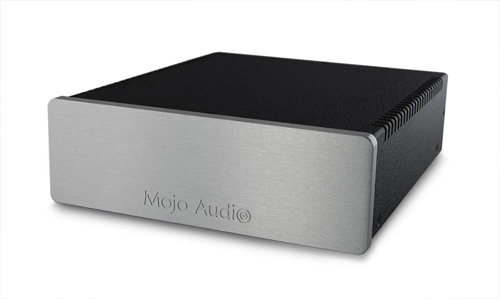|
|
You are reading the older HTML site
Positive Feedback ISSUE 72
mojo audio Mac mini Music Sever as reviewed by Al Chieng
I have always felt that when addressing an upgrade to my audio rig less is more. What I mean by this is that performing an upgrade takes careful thought and planning, and for me at least, is incremental. This incremental boost is for several reasons. One of the main ones is cost, but more importantly I always find it hard to pinpoint "change" when more than one component is switched in the audio chain. Recently, I found myself in that scary but exciting realm of can I make this any better? Cue my current music server. My digital front end consists of an Apple MacBook which has been a stalwart for many years. The all-in-one nature of the laptop was a definite strength as it runs nearly silent, can be upgraded to certain degree when the need arises, and is supported by a strong enthusiast crowd. One area of concern for me was, although the laptop is easy to tweak software wise, they are a lot harder to upgrade hardware wise. Running more ram intensive media players showed the age of my laptop as I eventually could no longer upgrade the ram. Checking my email I decided to take up an offer to review a product by a company called Mojo Audio. Before you immediately connect the name with that popular movie, the name according to owner Ben Zwickel, is derived from a protection against voodoo. Thus, Mojo Audio was born on according to Ben, "simple physics and affordable pricing." A little background on Mojo Audio from Ben himself:
All contents were shipped promptly and packed with care. Mojo Audio is an outfit that is more concerned with its product versus flashy packaging or presentation. The Mac mini server was sent with the PSU upgrade, Firewire cable, and 2.5 inch dual bay raid enclosure. Right away I saw the attention to detail as all of it connected together quite nicely and seamlessly; the only small hiccup being the sequence of how to connect the Firewire cable with the rest of the system. A quick email resulted in the original Firewire being replaced with a new version developed by the company. Ben has stated that the majority of the company's time has been spent fulfilling orders on its media server lineup… so proper documentation will be available to customers later this year; translation: some media smarts are required for the initial installation and getting it all together. What I would recommend is running initially a traditional keyboard, mouse, and monitor setup to get all your software and settings properly tweaked, and then run a simple remote app to access your media server when needed. After the initial setup it was smooth sailing to operate the Mojo sever with the remote app of my iPhone or iPad. The major strength of the platform became evident as using the Mac mini allows for a very flexible platform to load any number of different media players, plugins, and devices to maximize the playback. The comparison between my MacBook and the Mojo server took place using the standard iTunes and Audirvana.
What do you get for your money? I embarked on my quest by playing "Don't Leave" by Norwegian singer Ane Brun. The song was recently featured in a car commercial and her singing style is quite unique. Playing the song through the Mojo server was definitely a treat as the presentation of folk and adult contemporary music was conveyed in a very intimate way. Ane took front and center which improved upon my previous setup in terms of a darker background between notes. I suspect the improved power solution provides less interference and results in a quieter background. Out of curiosity I played the track both directly from my NAS (Network Attached Storage device) wirelessly and from the SATA portable hard drive. The track sounded beautifully from either storage device with little audible difference between the two. Hearing the strength of female vocals with the server led me into trying some Bonnie Raitt and "I Can't Make You Love Me" from her very successful album Luck of the Draw. I find this song to be sometimes system dependent; to draw out emotional connection between the heartfelt lyrics and the singer can be daunting. Raitt has said it herself that although she enjoys performing the song on a regular basis the range necessary and the emotional toll it takes can be draining. Another improvement the server made was increased depth and width of my sound stage. Orchestral works such as Cesar Frank's Symphony in D Minor performed by the Philharmonic Orchestra and conducted by the great Carlo Maria Giulini profiled this enhanced sense of space. I could hear the subtle nuance of his conducting throughout the piece and the connection and interpretation of his direction on the music. Overall, the server had an uncanny way of increasing the resolution of all the music I threw at it. What additionally do you get for your money? Well, not only is the Mojo Audio server a music playback device, but it can also be used as a very competent media server. For those that need an all-in-one device, Ben picked an excellent transport to stream all kinds of different media. The flexibility is basically anything that is being produced for the Apple platform and for those that know a thing or two about computers in general you can also go cross platform in supporting Windows and Linux based applications. For example, when not listening seriously to music the server can be used to watch Netflix or used as a go between media server to watch movies on my iPhone while away from home by accessing my NAS. Who is this product for? Well, I believe that if you are ready to replace an aging transport with something that provides media flexibility, then this is your product. What Mojo Audio has done is introduce a product that has the ability to be upgraded when the need arises. One advantage of using a server like this is the software possibilities. I like to think of it as having my iPhone doing my in-car navigation. I know that the user interface and maps will be continually updated as the need arises. More often than not the in-car systems offered by car manufacturers are not up to par and are expensive to upgrade. Ben has created an audio device for a mass audience that has the potential to be very intuitive and customizable. This simple example means that you are not going to be stuck with an aging audio device but something that has real longevity because the platform will be supported for many years. The entire package that I was provided can be bought incrementally as the need arises; perfect when the itch comes back and we need to scratch it. For those that own a Mac mini the proposition becomes even more attractive as Mojo Audio can perform upgrades on your existing machine. If you are a current Mac mini owner I would first go with the power source upgrade and see where your budget goes from there. For those going in new, you can purchase a Mac mini and send it to them or purchase an already modified one from the company. Checking out the company website Mojo provides a number of additional upgrades such as storage solutions, cables, and even an isolation platform. In the end, Mojo Audio has put together an outstanding product by deciding not to reinvent the wheel. Instead it chose a very competent product and made it even better for the audio enthusiast while keeping the functionality of the Mac mini intact. My listening notes indicated better separation of instruments, lower noise floor, and better imaging. The server was a definite improvement over my previous transport, and as this product matures I am confident that it will be more user friendly for those that are not technologically savvy. While I found it more convenient to connect the server to my NAS, I can definitely see the benefit of using the attached hard drive option. This option would give you a fully independent music server that is self-contained with a small footprint. The advantages of solid-state music playback have been reported in many articles and the Mojo Audio server could be utilized in this way. No moving parts means less mechanical interruptions, less power consumption, and less heat. The hybridization of technology is definitely exciting and Mojo Audio is at the forefront of providing a true media server solution. Give it a shot as this product has some serious mojo. Take care. Al Chieng Mojo Audio Music Server
Approximate Retail: $3049.75
|









